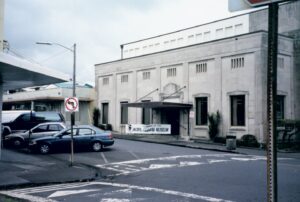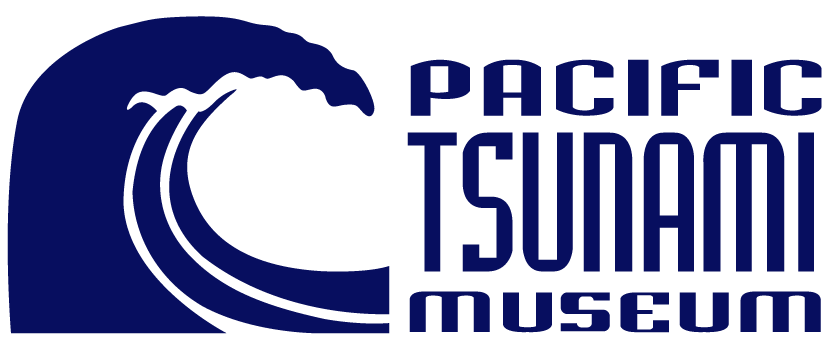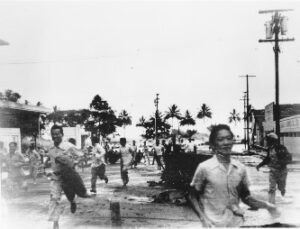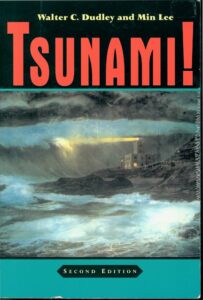History
The first major tsunami of the 20th century strikes Hawai’i, originating from the Kamchatka peninsula. Dr. Thomas A. Jaggar observed the seismic relationship between earthquake and tsunami firsthand.

 Our bayfront museum was constructed by the Bishop National Bank of Hawai’i in the tumultuous years of the 1930s. The towering art deco edifice and ironwork were masterminded by the distinguished C.W. Dickey, who is widely recognized as Hawai‘i’s preeminent architect from the 20th century.
Our bayfront museum was constructed by the Bishop National Bank of Hawai’i in the tumultuous years of the 1930s. The towering art deco edifice and ironwork were masterminded by the distinguished C.W. Dickey, who is widely recognized as Hawai‘i’s preeminent architect from the 20th century.
Triggered by a massive 8.6 undersea earthquake in the Aleutian Islands, tsunami waves traveled thousands of miles across the Pacific Ocean before reaching the shores of Hilo on April 1, 1946.
During what is now called the April Fool’s Day tsunami, waves inundated the town destroying the neighborhood of Shinmachi, causing widespread destruction, and claiming the lives of 159 people.
Despite being flooded and surrounded by destruction, the Bishop Bank building survived.
Triggered by a massive 9.6 earthquake in Chile, the May 23rd, 1960 tsunami had a profound impact on Hilo. The tsunami waves reached staggering heights, causing significant loss of life and property damage. Unfortunately 61 lives were lost.
While it was a tragic event, the ’60 earthquake played a pivotal role in shaping tsunami history by promoting research, preparedness, and a redevelopment plan for the Hilo waterfront.
In 1988, Dr. Walter Dudley extended a call to the community, searching for firsthand accounts of tsunami survival. After seeking out stories from tsunami survivors, he released the inaugural edition of his book, “Tsunami!”.
His initial publication would mark the foundation of the extensive wealth of knowledge and historical artifacts that would eventually find a home at the future Pacific Tsunami Museum.
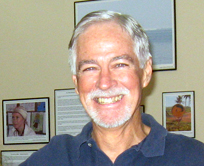

Jeanne Branch Johnston, a survivor of the 1946 tsunami, saw the need for a tsunami museum in Hilo. As Jeanne probed the idea of starting one, she found the community to be very responsive, and a steering committee was formed that year.
The Pacific Tsunami Museum (PTM) was co-founded by Dr. Walter Dudley and Jeanne Branch Johnston.
In 1994, a small museum was opened and later moved into the current PTM building. Originally called the “Hilo Tsunami Museum”, the name was changed to the “Pacific Tsunami Museum”.
On May 22, 1997, the 37th anniversary of the 1960 tsunami, First Hawaiian Bank donated its Kamehameha Branch building in downtown Hilo as a permanent site for the Pacific Tsunami Museum. It was on the 37th anniversary of the day when warning sirens sounded for the May 23, 1960 tsunami that devastated Hilo.
PTM took possession of the building in December 1997, opening its doors to the public in June 1998.
